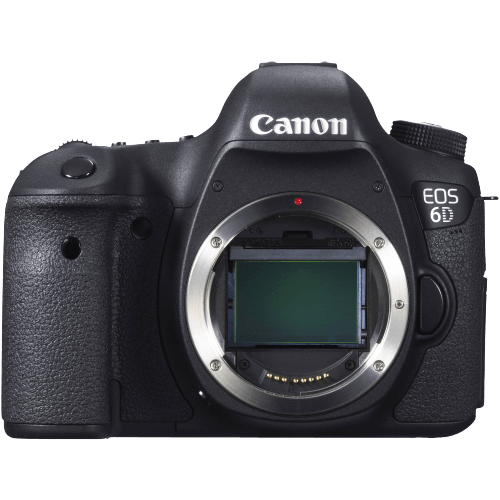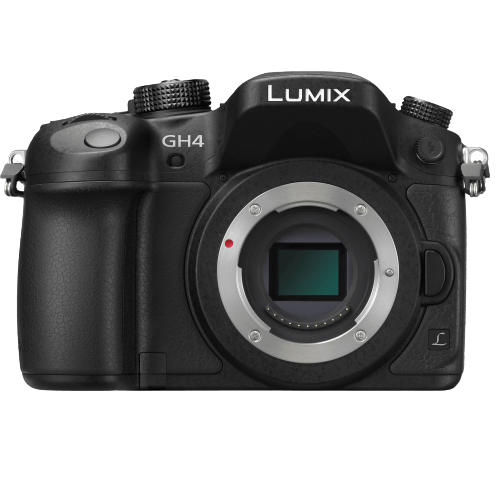Canon EOS 6D vs Panasonic Lumix DMC-GH4 Comparison
Canon EOS 6D

Panasonic Lumix DMC-GH4

The Canon EOS 6D narrowly takes the win with a score of 59/100, just one point ahead of the Panasonic Lumix DMC-GH4 at 58/100. Both cameras share similarities, such as being announced and released within two years of each other, with the Canon EOS 6D in 2012 and the Panasonic Lumix DMC-GH4 in 2014. They also have a similar launch price, with the Canon EOS 6D costing $2099 and the Panasonic Lumix DMC-GH4 at $1700.
The Canon EOS 6D stands out as a DSLR camera with a slightly higher score, larger size (145 x 111 x 71mm), and heavier weight (770g / 1.70lbs). On the other hand, the Panasonic Lumix DMC-GH4 is a mirrorless camera, which is more compact (133 x 93 x 84mm) and lighter (560g / 1.23lbs), making it more portable and easier to carry around.
Taking these factors into account, the Canon EOS 6D may be a better choice for those who prefer a larger, more traditional DSLR camera, while the Panasonic Lumix DMC-GH4 could be ideal for users seeking a more compact and lightweight option without sacrificing quality.
Canon EOS 6D vs Panasonic Lumix DMC-GH4 Overview and Optics
The Canon EOS 6D wins the optics comparison with a score of 61/100, while the Panasonic Lumix DMC-GH4 scores 52/100. Both cameras share some specifications, such as their CMOS sensor type, lack of image stabilization, and shooting speed capabilities.
The EOS 6D’s optics superiority is evident in several areas. Its 20.2-megapixel resolution surpasses the GH4’s 16 megapixels, resulting in clearer and more detailed images. Additionally, the EOS 6D has a full-frame sensor size, which is larger than the GH4’s Micro Four Thirds size. This difference leads to better low-light performance and increased dynamic range. Furthermore, the EOS 6D’s DXOMARK sensor score of 82 outperforms the GH4’s 74, indicating a higher quality sensor. Lastly, the Canon EF lens mount offers a wider selection of lenses compared to the GH4’s Micro 4/3 mount.
Despite its lower optics score, the Panasonic GH4 has some advantages. Its shooting speed of 12 frames per second is significantly faster than the EOS 6D’s 4.5 frames per second, making it more suitable for capturing fast-moving subjects. Additionally, its 4:3 aspect ratio is more versatile than the EOS 6D’s 3:2 ratio, providing a greater range of compositional options.
When comparing the optics of these two cameras, the Canon EOS 6D stands out with its higher resolution, superior sensor size, and better DXOMARK score. However, the Panasonic GH4 offers faster shooting speed and a more versatile aspect ratio. Ultimately, the choice between these cameras will depend on the individual’s priorities and preferred shooting scenarios.
Canon EOS 6D vs Panasonic Lumix DMC-GH4 Video Performance
The Panasonic Lumix DMC-GH4 outperforms the Canon EOS 6D in video capabilities, scoring 70/100 compared to the 6D’s 43/100. Both cameras share some common video specifications, such as the ability to record in Full HD (1920 x 1080) resolution. However, the GH4 offers much more in terms of video performance.
A significant advantage of the GH4 is its ability to record in 4K resolution (4096 x 2160), allowing for higher quality and more detailed footage. This feature is not available in the 6D, which is limited to Full HD. Additionally, the GH4 has a built-in time-lapse functionality, enabling users to create stunning time-lapse videos without the need for external equipment or software. This feature is absent in the Canon 6D.
Despite its lower score, the Canon 6D does have a higher maximum video frame rate of 30fps, compared to the GH4’s 24fps. This difference may be beneficial for those who require smoother motion in their video recordings. However, the GH4’s superior resolution and additional features outweigh this advantage.
Comparing the video capabilities of these two cameras, the Panasonic Lumix DMC-GH4 is the clear winner. Its 4K resolution, built-in time-lapse functionality, and higher overall video score make it a better option for videographers and content creators. While the Canon EOS 6D may offer a slightly higher frame rate, it falls short in other crucial aspects, making the GH4 a more versatile and capable choice for video recording.
Canon EOS 6D vs Panasonic Lumix DMC-GH4 Features and Benefits
The Panasonic Lumix DMC-GH4 emerges as the winner in the features comparison, with a score of 70 out of 100, while the Canon EOS 6D scores 57 out of 100. Both cameras share some common specifications, such as a 3-inch screen size, WIFI connectivity, and the absence of Bluetooth. However, there are key differences that make the GH4 superior in this comparison.
The Lumix GH4 has a touchscreen, which the EOS 6D lacks. This feature allows for easier navigation and quicker adjustments in settings. Additionally, the GH4 has a flip screen, enabling users to shoot from different angles and positions more conveniently. These two features contribute to the GH4’s higher score and better usability.
On the other hand, the Canon EOS 6D has GPS functionality, which the Panasonic GH4 does not offer. This feature allows users to geotag their images, making it easier to organize and locate photos based on location. However, this advantage does not significantly impact the overall user experience compared to the GH4’s touchscreen and flip screen capabilities.
Taking these factors into account, the Panasonic Lumix DMC-GH4 stands out as the better camera in terms of features. Its touchscreen and flip screen provide a more user-friendly experience, which is essential for photographers who need quick and easy access to settings and shooting angles. While the Canon EOS 6D’s GPS functionality is useful, it does not outweigh the benefits of the GH4’s superior features.
Canon EOS 6D vs Panasonic Lumix DMC-GH4 Storage and Battery
The Panasonic Lumix DMC-GH4 emerges as the winner in storage and battery comparison with a score of 60/100, while the Canon EOS 6D scores 45/100. Both cameras have a few specs in common, such as accepting SD, SDHC, and SDXC memory cards, and neither offers USB charging.
The GH4 surpasses the 6D with its two memory card slots, providing more storage and flexibility for users. However, the 6D excels in battery life, offering 1090 shots per charge compared to the GH4’s 500 shots. This extended battery life makes the 6D more suitable for longer shooting sessions.
Despite the GH4’s higher score, the 6D’s superior battery life may be a deciding factor for some photographers. Ultimately, the GH4 is better in terms of storage capacity, while the 6D leads in battery performance.
Canon EOS 6D vs Panasonic Lumix DMC-GH4 – Our Verdict
Are you still undecided about which camera is right for you? Have a look at these popular comparisons that feature the Canon EOS 6D or the Panasonic Lumix DMC-GH4:

